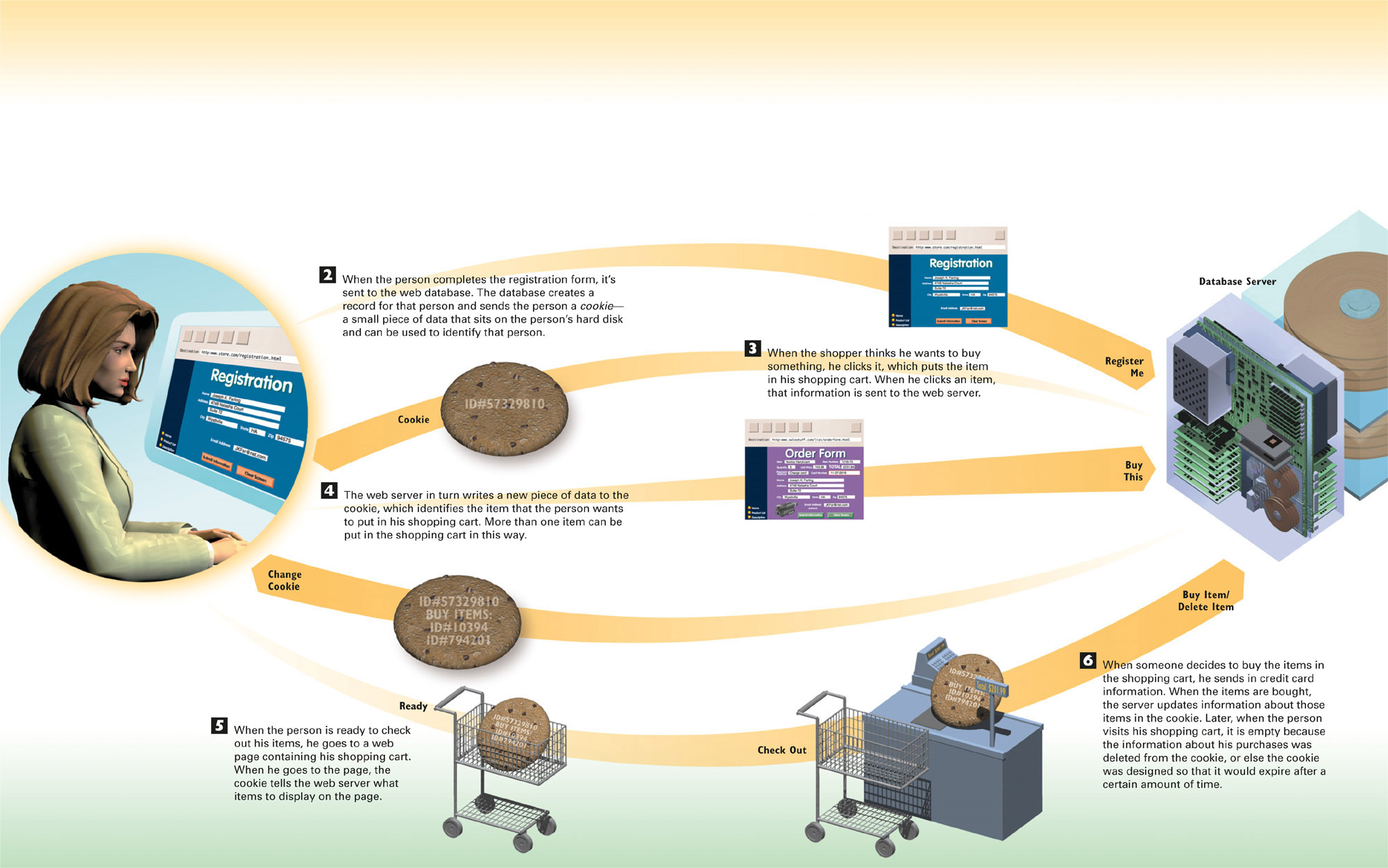
Billions of dollars are spent every year shopping on the Internet—and if think tanks and market research firms are to be believed, that’s only the beginning. The Internet will eventually revolutionize shopping in the same way it’s revolutionized working, getting information, and communicating.
Online shopping is made possible through the use of encryption techniques—the ability to scramble information as it’s sent through the Internet so that no one can read it except the intended recipient. Encryption is used to scramble credit card information—the primary way that people pay when buying online. (For more information about encryption, and to see how encryption works, turn to Chapter 50, “Cryptography, Privacy, and Digital Certificates.” To see how encryption can keep email private, turn to Chapter 11, “How Email Works.”)
Most of what you see when you visit a shopping site on the Internet is contained in databases on web servers. These databases have information about the products for sale at the site—and they’re also used to automatically generate the HTML pages that make up the shopping site. So, for example, when a new product becomes available, information about that product is put into a database, and CGI scripts and a web server then work with the database to create a new item on a web page describing the product. You, in turn, can look at that product and decide whether you want to buy it.
Databases and cookies are also used when you use virtual shopping carts—portions of a website where you place items you’re considering buying. Before buying, you can take items out of the cart or put new items in. Cookies track everything you put into and take out of the cart, and then databases work with the cookies, CGI scripts, and web servers to complete the transaction when you want to buy something.
Web databases are also used to complete the shopping transaction when you buy. When you decide you want to buy something from a site, you fill out a form, send in your credit card information, and that information is sent to a web database. The database, in turn, checks the validity of your credit card. If it’s valid, the database sends a confirmation to you and then sends off an order to a warehouse or other distribution method that ships the product to you. Databases can’t do all this by themselves—they work in concert with CGI scripts, web servers, and cookies.
This chapter looks at how online buying and virtual shopping carts work. Finally, you’ll see how one of the most popular kinds of buying sites works—online auctions.



